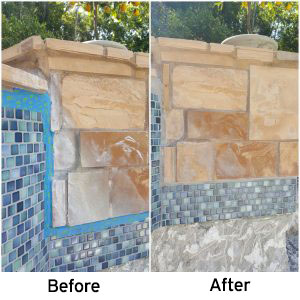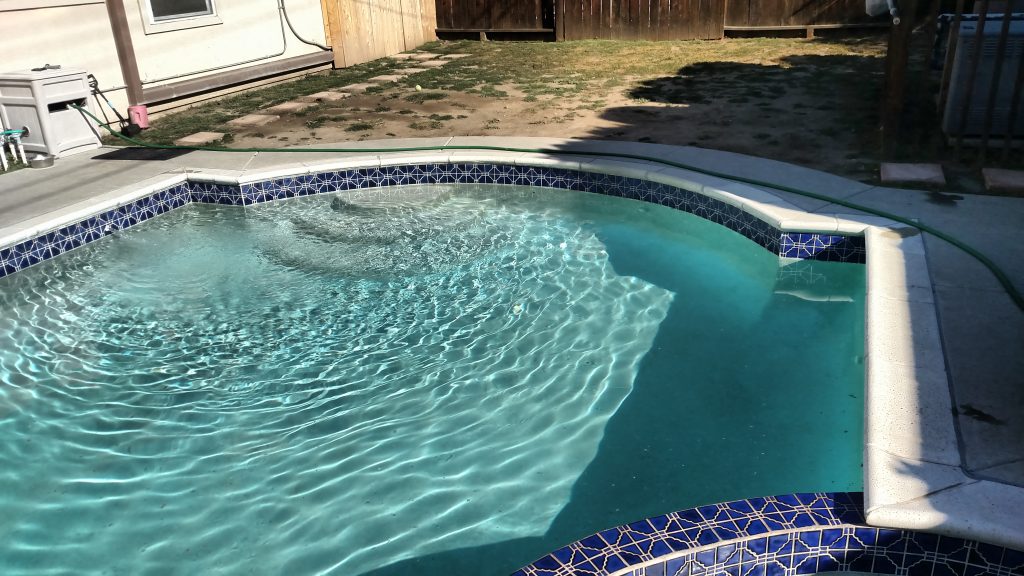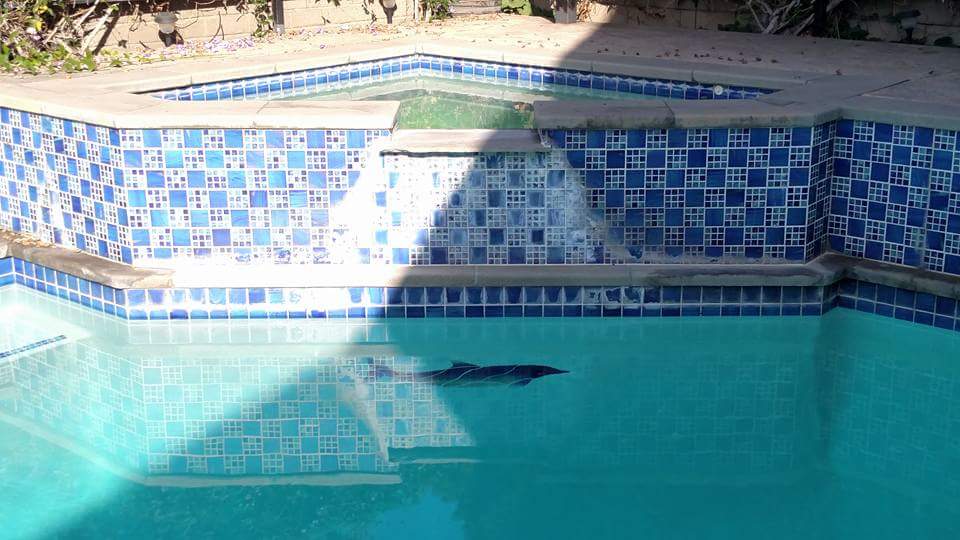Lime stains, sometimes called scale, occur around the upper edge of the pool and resemble deposits of white or gray crusts. They are often caused by hard water or minerals that seep from nearby mortar glue.
If left in place, they can lead to permanent stains on the tile, as well as causing the pool to look dirty and unattractive. Removal of calcium deposits from tiles in the pool will require some physical work.
Although efflorescence is not harmful to cement, excessive amounts of it can cause fungal or insect problems. Once the calcium deposits harden, they are virtually impossible to remove without acid solutions.
Sometimes they could be soft white scales and in severe cases, thicker and harder. You’ll have to approach cleaning them with different strategies.

Unfortunately, you must repeat the process periodically, as the spots often return.
How to Clean the Soft White Scales on Your Tiles
- Drain the water from the pool at least 6 to 10 inches so you can easily access areas stained with calcium. This also allows you to clean the loosened calcium off without depositing it in the pool water.
- Kneel on the edge of the pool, or enter the pool if you do not mind getting wet. Place a stiff brush bristle tiles on top of the calcium deposits and scrub the tiles of the pool using circular motions to loosen the deposits.
- Clean the tile of the pool with a cloth or a paper towel to remove the loosened calcium. Examine the area to see if all the deposit came off, and use a pumice stone to scrub gently with circular motions or no calcium is maintained.
- Remove the thickness scale from the tile with a razor blade, taking care to keep a low angle and avoid scratching the surface.
- Clean the area again with the cloth. Repeat the process to clean around the perimeter of the pool to remove the remaining calcium deposits.
Tips and warnings
- You can use a standard pumice stone available at beauty stores or buy one at a pool store that has a longer handle made specifically for pools.
- Commercial products are also available to remove tile incrustations from the pool.
How to Remove the Heavy Concrete Calcium Deposits

Stronger acids are required for the heavier calcium deposits.
Instructions
- Dress appropriately for security purposes. Wear protective clothing, goggles, acid-resistant gloves, and a mask equipped with an acid-grade filter.
- Set a portable fan nearby and open the windows to provide adequate air circulation. Fill a spray bottle with acetic acid.
- Spray the acetic acid generously on the calcium deposits. Allow the acid to penetrate the cement for the recommended amount of time. Follow the manufacturer’s instructions on the product label.
- Scrub the cement with a hard bristle brush to dissolve the calcium deposits. Continue to apply acetic acid and scrub the cement until all calcium deposits are removed.
- Sprinkle baking soda generously over clean cement to neutralize the acid. While the acid neutralizes, fill a plastic bucket with water.6 Clean the affected surfaces promptly to restore the appearance of the cement and prevent future problems. To do this, cement thoroughly rinsed with water, using a coarse sponge. Allow the cement to air dry.
Tips and warnings

- You can substitute hydrochloric acid for acetic acid. However, never use hydrochloric acid inside or mix it with any chemical.
- Be very careful when using acetic acid; It is highly corrosive to the skin.



